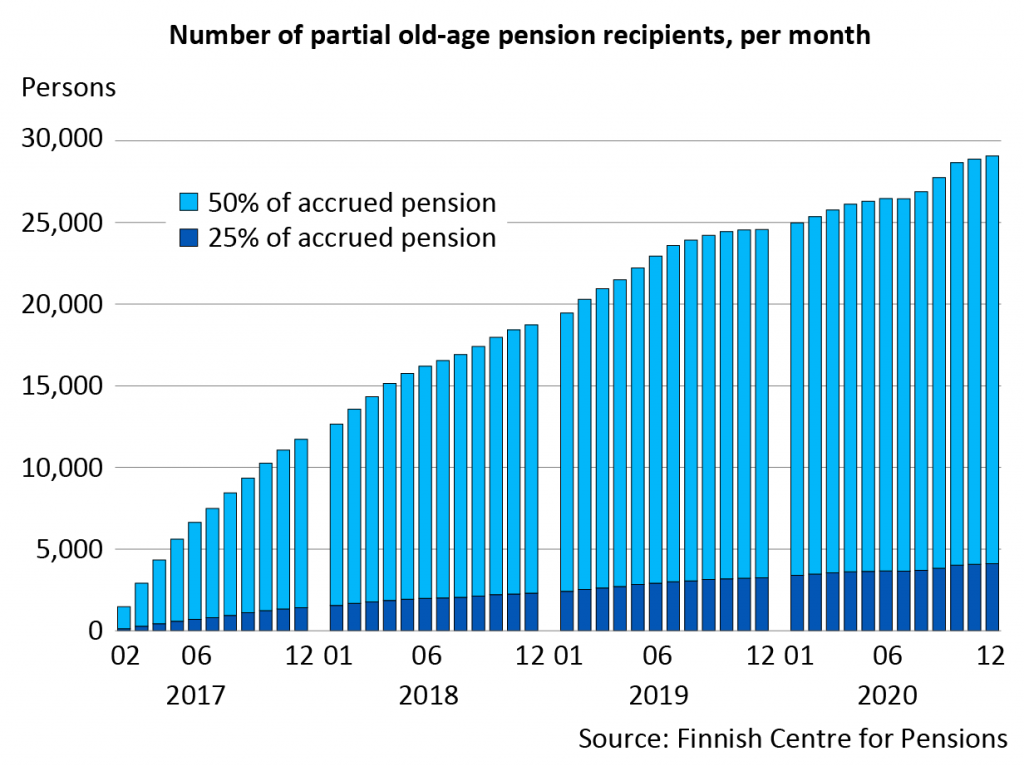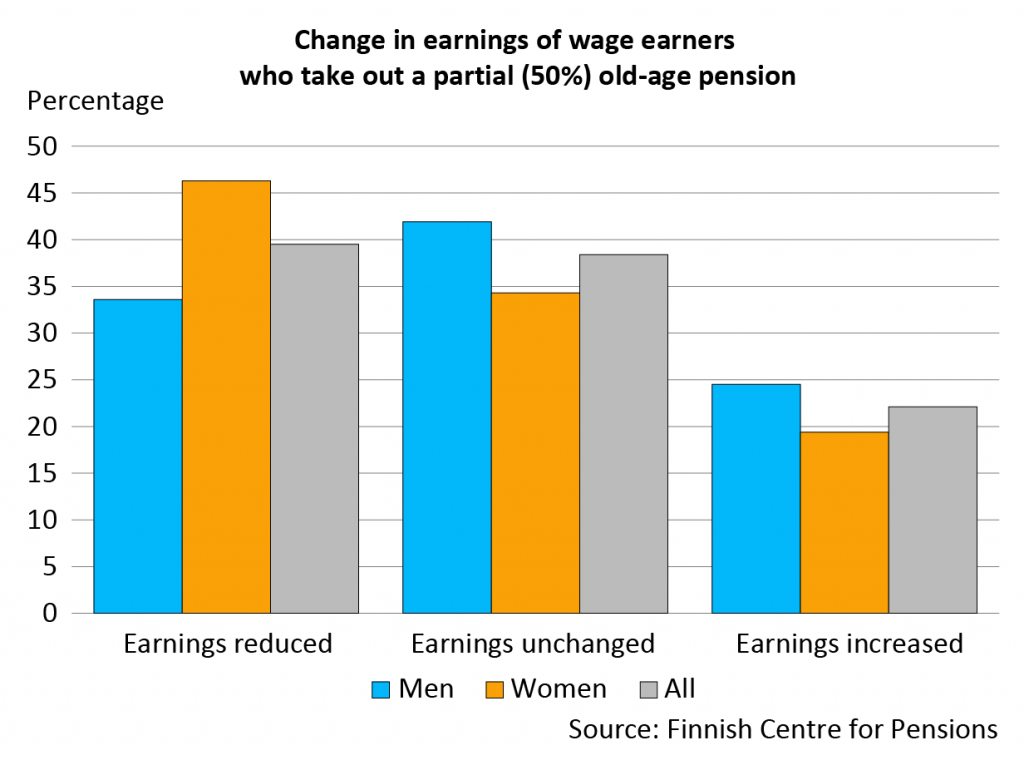No peak in partial old-age pensions in the year of the Corona pandemic

The number of new partial old-age pensions grew only slightly in 2020. At the end of the year, a total of 29,000 persons were drawing a partial old-age pension. Statistics of the Finnish Centre for Pensions shows that one third of them have reduced working.
When the corona pandemic began in early 2020, claims for a partial old-age pension momentarily took an upswing. The same happened in August-September, but on an annual level, the popularity of this pension benefit did not increase significantly.
In 2020, new partial-old-age pensions numbered 13,000 (up by 5% from 2019).
At year-end 2020, more than 29,000 persons received a partial old-age pension, up by 4,500 compared to 2019. The growth is due to the rising retirement age and working past the retirement age of one’s age group. The number will continue to grow as partial old-age pensions will be paid for increasingly longer periods.
Development manager Jari Kannisto (Finnish Centre for Pensions) finds the number of starting partial old-age pensions to be lower than expected. The moderate growth may be caused by the employment effects of the corona pandemic. The effects have varied depending on age. “Older workers have not suffered from unemployment due to the corona pandemic to the same extent as young adults working in the service sector. In fact, the employment rate for the 60–64-year-olds rose slightly in 2020. That may be why people have not claimed the partial old-age pension more than usual in order to, for example, make up for a weake economy,” Kannisto explains.

Pension recipients have average incomes
Most often, the partial old-age pension is taken out by a wage earner with an average income. The majority work in the private sector and continue working after taking out this benefit. More than half (58%) of those taking out the partial old-age pension are men.
Nearly 90 per cent of those who have taken out a partial old-age pension have taken out 50 per cent of their accrued old-age pension. The average monthly benefit in 2020 was 810 euros. The median pension was 720 euros per month.
“A clear majority of those taking out a partial old-age pension are regular, over-60-year-old persons with an average income who may want to ease their workload slightly in the last years of their working life,” explains Kannisto.
Based on their earnings level, an ample one third of those continuing at work have reduced their working hours. For the rest, the earnings level either did not change at all or increased slightly. Women reduced their working hours clearly more often than men.

Less than one hundred new years-of-service pension recipients in 2020
The years-of-service pension came into force at the beginning of 2018. During the first three years, only 120 persons have received this benefit. Ten of them are women.
73 new years-of-service pensions began in 2020. They averaged nearly 2,200 euros per month. At year-end, a total of 62 years-of-service pensions were in payment.
So far, the years-of-service pension has been paid out for only a few months before it has been converted to an old-age pension. In the future, this benefit may become more popular as the general retirement age rises.
The partial old-age pension
- replaced the part-time pension in connection with the 2017 pension reform;
- offers a possibility for the 61-year-olds and older to take out a quarter (25%) or half (50%) of the pension they have earned so far;
- permanently reduces the full old-age pension by 0.4 per cent for each month that the pension is taken early;
- can be taken out after reaching the retirement age; if it is taken late, after reaching one’s retirement age, the share taken out is increased by 0.4% for each month that it is deferred;
- does not limit how much you can work or earn. You can be unemployed or work while drawing the pension.
Years-of-service pension
- can be granted to workers aged 63 or more before the old-age pension;
- can be granted if you have done work that requires great mental or physical effort for at least 38 years;
- requires a medical statement that your ability to work has been reduced;
- is the pension that you have earned up to the time that you take out this benefit;
- is paid until you reach your own retirement age.
